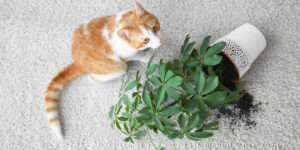
Understanding LECA for Plants
Lightweight Expanded Clay Aggregate (LECA) is gaining popularity among indoor gardeners and hydroponic enthusiasts as a versatile growing medium. This article will explore what LECA is, its benefits and drawbacks, how to use it effectively, and the types of plants that thrive in this medium. Additionally, we will provide a comprehensive FAQ section and a table summarizing key information about LECA.
What is LECA?
LECA consists of small, lightweight clay balls that are created by heating clay at high temperatures until it expands. This process results in a porous material that retains moisture while allowing for excellent aeration around plant roots. LECA is often used as a soil substitute or amendment in various gardening applications, particularly in hydroponics.
Characteristics of LECA
- Porosity: The porous nature of LECA allows for air circulation, which is essential for healthy root development.
- Water Retention: LECA can absorb water and gradually release it to the plant roots, reducing the frequency of watering.
- Inert Medium: Unlike traditional soil, LECA does not contain nutrients, requiring the addition of fertilizers for plant growth.
- Reusability: LECA can be cleaned and reused multiple times, making it an eco-friendly option for gardeners.
Benefits of Using LECA
- Improved Aeration: The structure of LECA promotes airflow to the roots, which can help prevent root rot and other issues associated with compacted soil.
- Reduced Risk of Pests: Since LECA is inorganic, it does not harbor pests like fungus gnats or other soil-borne insects.
- Easier Water Management: With a clear view of water levels in pots using LECA, gardeners can easily monitor and adjust watering schedules.
- Sustainable Option: LECA is reusable and can last for many years if properly maintained.
Drawbacks of Using LECA
- Nutrient Requirements: As an inert medium, LECA does not provide any nutrients to plants. Gardeners must use hydroponic fertilizers to ensure plants receive essential minerals.
- Cost: Initial setup costs can be higher than traditional soil, as LECA is often sold at a premium price.
- Learning Curve: Transitioning from soil to LECA may require adjustments in watering and fertilization techniques.
How to Use LECA
Using LECA involves several steps to ensure optimal growth conditions for your plants:
- Preparation:
- Rinse the LECA balls thoroughly to remove any dust or debris.
- Soak the balls in water for 24 hours before use to enhance their water retention capabilities.
- Potting:
- Choose a pot with drainage holes or use a semi-hydroponic setup with a reservoir at the bottom.
- Fill the bottom half of the pot with soaked LECA balls.
- Place your plant on top and fill around it with more LECA until the pot is full.
- Watering:
- Fill the reservoir with water up to about one-third of the pot’s height.
- Monitor water levels regularly and refill as needed.
- Fertilization:
- Use hydroponic fertilizers according to the manufacturer’s instructions, as plants grown in LECA require additional nutrients.
Ideal Plants for LECA
Many houseplants thrive in LECA due to its unique properties:
- Tropical Epiphytes: Plants like Monstera, Hoya, and Philodendron benefit from the aeration and moisture retention that LECA provides.
- Orchids: Many orchid species prefer well-draining media like LECA.
- Snake Plants (Sansevieria): These hardy plants do well in various conditions, including those provided by LECA.
Table: Comparison of Growing Media
| Feature | Soil | LECA |
|---|---|---|
| Nutrient Content | Contains organic nutrients | Inert; requires added nutrients |
| Water Retention | Varies; can retain excess moisture | Absorbs water; drains well |
| Aeration | Limited in compacted soil | Excellent aeration |
| Pest Resistance | May harbor pests | Low pest incidence |
| Reusability | Limited; may degrade over time | Highly reusable |
| Setup Cost | Generally lower | Higher initial cost |
FAQ Section
What is LECA?
LECA stands for Lightweight Expanded Clay Aggregate, which consists of small clay balls used as a growing medium for plants.
How do I prepare LECA before using it?
Rinse the LECA balls thoroughly to remove dust and soak them in water for 24 hours before use.
Can I use regular soil with LECA?
While some gardeners mix soil with LECA, it’s generally recommended to use them separately to avoid complications related to moisture retention and nutrient availability.
Do I need special fertilizers when using LECA?
Yes, since LECA does not provide nutrients on its own, you will need to use hydroponic fertilizers designed for plants grown in inert media.
What types of plants are best suited for growing in LECA?
Tropical epiphytes like Monstera and Hoya, orchids, and snake plants typically thrive when grown in LECA.
Is using LECA more expensive than traditional soil?
Yes, initial costs for purchasing LECA can be higher than traditional potting soil; however, its reusability may offset this over time.
How often should I water plants grown in LECA?
Watering frequency will depend on environmental conditions; however, you can monitor water levels easily due to the transparent nature of most pots used with LECA.
Can I grow all types of plants in LECA?
Not all plants will thrive in LECA; those with sensitive roots or specific moisture needs may not do well. It’s best to research individual plant requirements before transitioning them to this medium.For more detailed information on growing plants with different mediums including LECA, you can refer to resources such as Wikipedia or government publications on horticulture practices.
Conclusion
LECA presents an innovative alternative to traditional soil gardening. While it offers several advantages such as improved aeration and reduced pest issues, it also requires careful management regarding nutrient supply and watering practices. By understanding how to effectively use this medium and which plants thrive in it, gardeners can enjoy successful growth while exploring new methods of cultivation.


